The Viewfinder
By Guru Madhavan,
Norman R. Augustine Senior Scholar and Senior Director of Programs, National Academy of Engineering, Washington, D.C.
Directing his 1944 survival flick Lifeboat, the engineer-turned-filmmaker Alfred Hitchcock railed against the notion of a soundtrack accompanying the action. In the midst of a rough and vacant sea, he demanded, “Where does the music come from?” Told of the tirade, famed cinematic composer David Raksin is said to have replied, “Ask Hitch where the cameras are coming from.”
In the collection of photos that constitute Stefanie Bürkle’s Studio + Laboratory, we, the viewers, become the hidden orchestra and camera in the sets of knowledge creation. The visual artist provokes us with an ensemble of working methods—an internal camerawork that leaves the past unseen, future to be designed, and the present captured as material reality.
Bürkle’s images omit the usual accompaniments to knowledge creation. Here, there are no invested emotions, no ambitions, no activism, no politics, no egos, no pressures, no laurels, and no losses. This subtraction fades out the boundaries erected between sciences and arts, and functions and truths—perhaps even suggesting useful functions for those truths. The net focus is on the engineering of knowledge, and by those outside the pictures.
Throughout human history, mechanical instruments have enabled fundamental insights and inspired new ways of thinking about reality. In the story where telescopes advanced astronomy, microscopes preceded genetics, engines powered energetics, and airplanes propelled aeronautics, engineering, as a practical art, has birthed new sciences. Supporting this point, the crash test dummies and wind tunnel experiments pictured in Bürkle’s collection reinforce how tools continue to establish our understandings of the world. If the intent is highest safety, from an engineering sense, does it matter if a certain knowledge comes from desire instead of disinterestedness, or from consumerism rather than curiosity? We like to privilege one form of knowledge over another, theories habitually held superior to tools. “A prototype is indeed a theory,” goes one declaration seeking a deserved higher status for engineering knowledge, an idea pertinent in the arts as well. Marcel Duchamp’s Fountain stunned the art world not because the artist declared it as “art,” but because it defied the artistic customs just as many movements preceding it. Art, in this instance, could be ready-made. The pseudonym R. Mutt, Duchamp wrote, “took an ordinary article of life, placed it so that its useful significance disappeared under the new title and point of view—created a new thought for that object.” Perhaps, a new thought through that object.
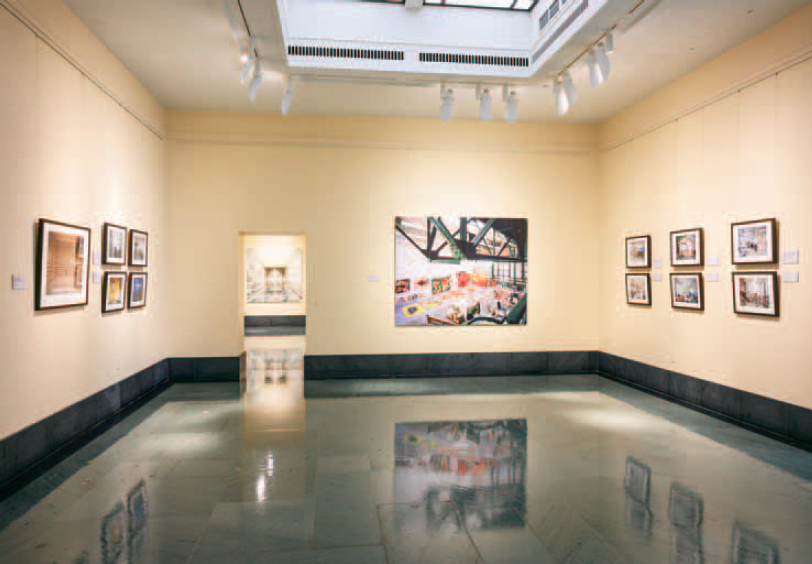
Stefanie Bürkle’s exhibition, Studio + Laboratory: Workshops of Knowledge, was on display at the National Academy of Sciences’ West Gallery from August 1, 2019, through January 31, 2020.
Bürkle’s vantage commends practicality; it may even honor adaptability—how knowledge is put to fruitful use across situations. But any workshop of knowledge is also a zone of ignorance. The celebration of knowledge should not devalue ignorance, for that was its starting point. The concepts are distanced twins in the dark and light of inquiry that, akin to photography, locate the viewer between the exactness of the technique and indefiniteness of the message. Knowledge and ignorance are not necessarily opposing forces: they organize, lead to, and construct one another like the union of cinematography and soundtrack. Unlike ignorance sometimes, though, knowledge does not necessarily promote bliss. Knowledge is known to both settle and unsettle us. Knowledge gives us control—both real and illusive. Hence it is pursued and esteemed. Knowledge may quicken action in one area at the expense of others. Knowledge is not always sourced from its creators; it is also built by its beholders.
As in Rear Window, another creation of Hitchcock, through Bürkle’s lens we see the world differently and also participate in it differently. In this film, the camera replaces the perspective of a disabled protagonist, who is a photographer by trade. His understanding of the surrounding world is approximated piecewise through the zooms and angles into the windows of the neighborhood. There are strangers everywhere, there is action everywhere, but they are subtracted out for focus. At this point, we too become voyeurs of knowledge, as Bürkle’s collection suggests. We also become unreliable narrators of our creations and consumptions. We are left to contemplate the facts and politics of knowledge. The more we observe, the more we discern.

Data Assimilation Laboratory, Low-Speed Wind Tunnel, Computational Fluid Dynamics, Technical University of Berlin, from the series Studio + Laboratory: Workshops of Knowledge, 2017
Inkjet print on paper
23.5 x 24 inches
With her photographs of artists’ studios and scientists’ laboratories in Berlin, Stefanie Bürkle encourages us to look past some of the superficial differences between artists and scientists and to consider whether, at a deeper level, significant parallels exist in the creative processes of the two disciplines. Bürkle is a professor of fine art at the Technical University of Berlin. Her artistic practice ranges from painting and photography to video and installation. In addition to highlighting the connections between art and science, she focuses her art and research on a critical examination of urban space, exploring topics such as construction sites and facades, architecture as scenography, and theme parks and tourism.
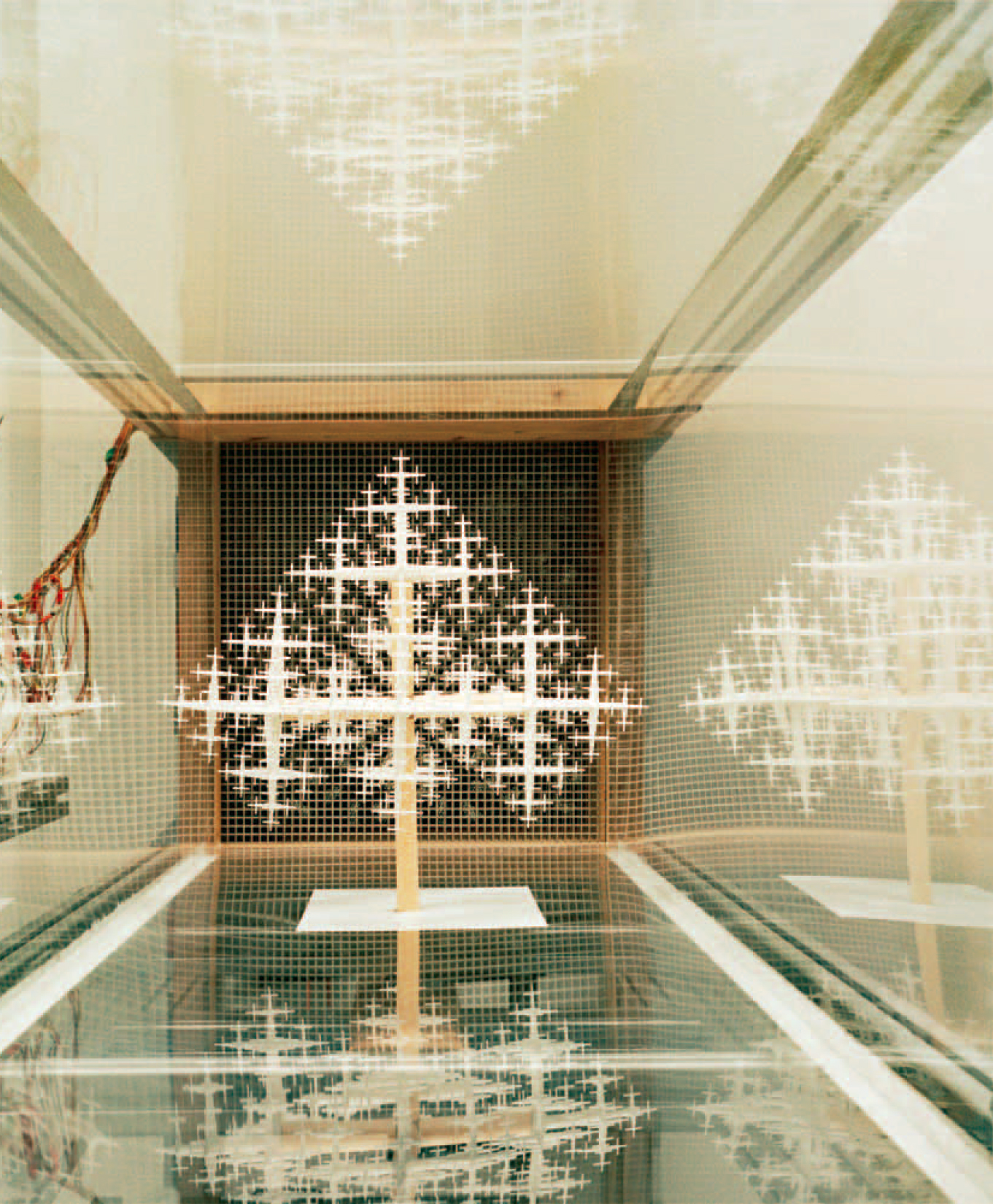
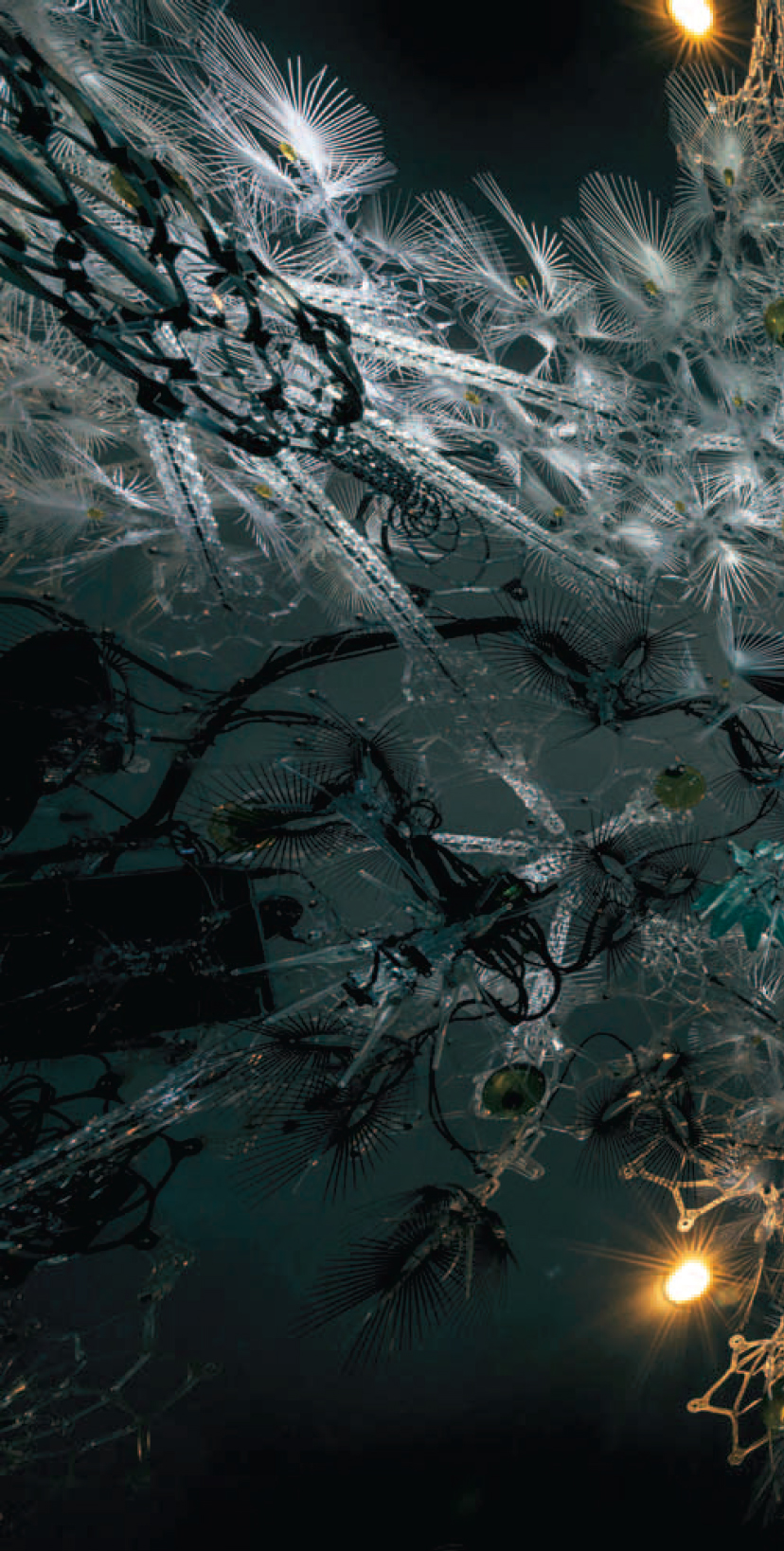
Right and following spread: Sentient Chamber (documentation), 2016
Archival inkjet print
59 x 30.5 inches
Sentient Chamber was an interactive installation on view at the National Academy of Sciences, Washington, D.C., from November 2015 through May 2016. This experimental cross-disciplinary work drew from ideas about next-generation lightweight structures, interactive distributed computation, and synthetic biology to imagine a possible future of architecture.
The installation was created by Philip Beesley and his Toronto-based Living Architecture Systems Group. Students from The Catholic University of America School of Architecture and Planning; Gallaudet University Department of Art, Communication, and Theatre; Johns Hopkins University Masters of Arts in Museum Studies; and Virginia Tech School of Architecture + Design provided installation assistance.
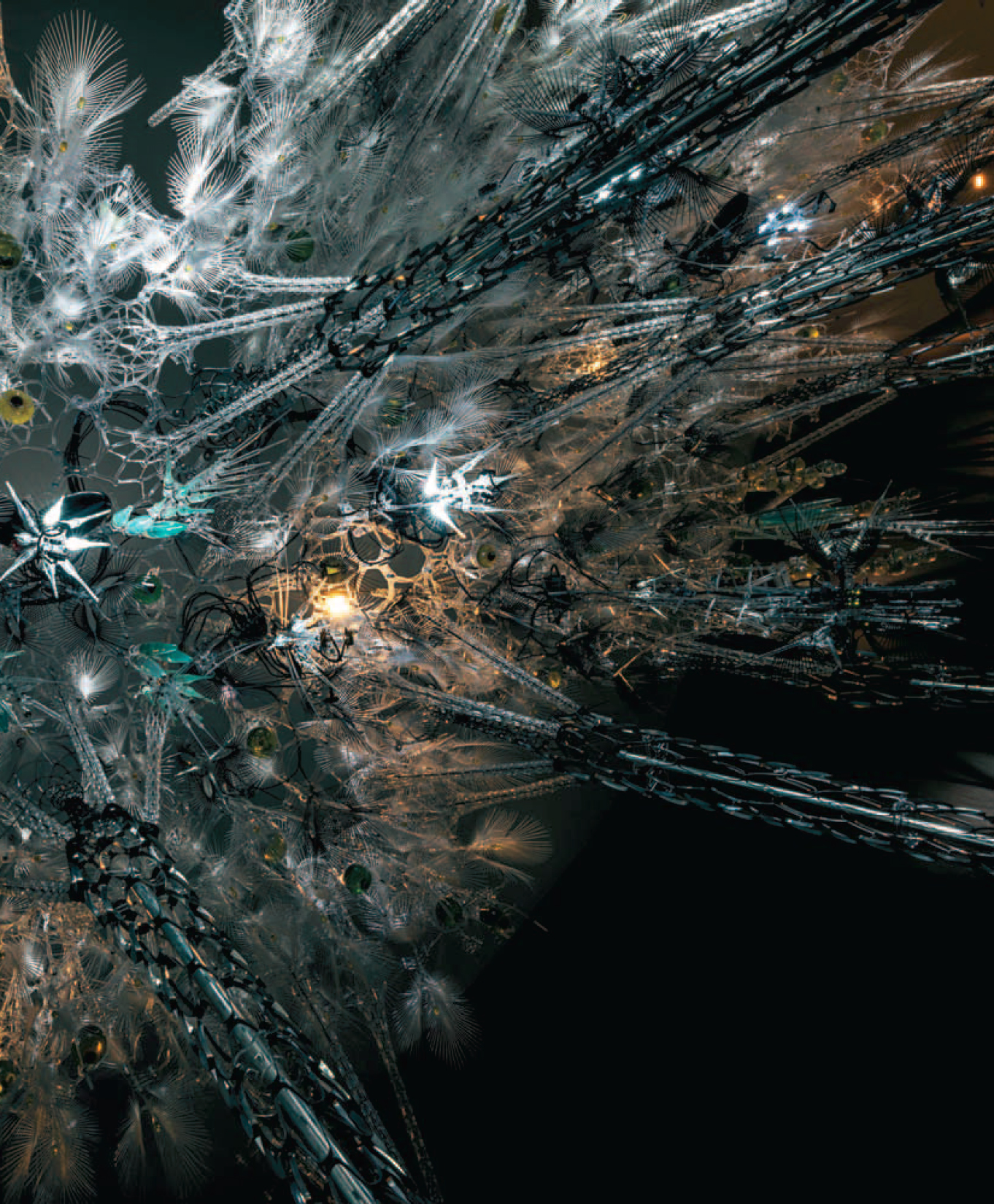
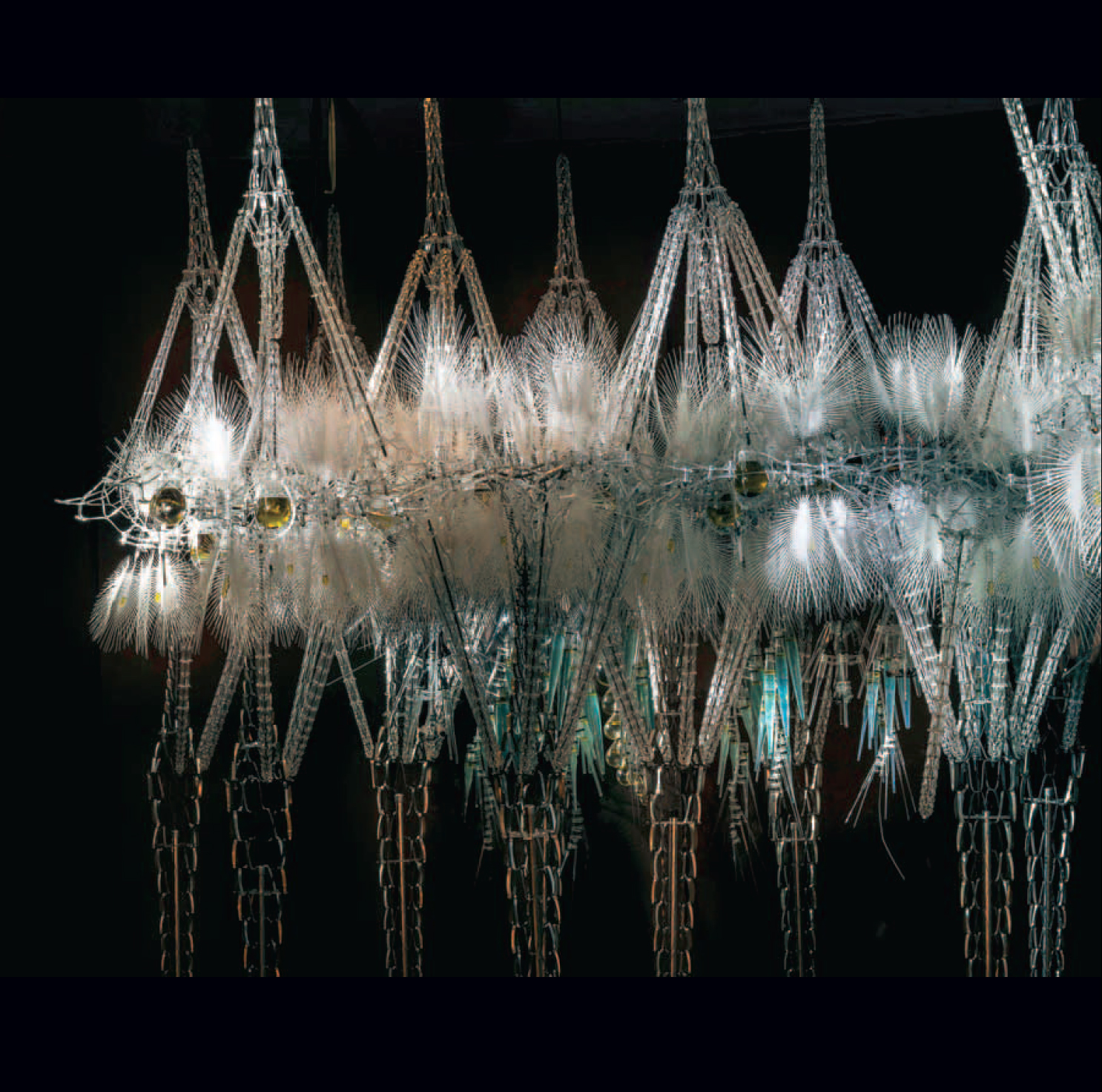
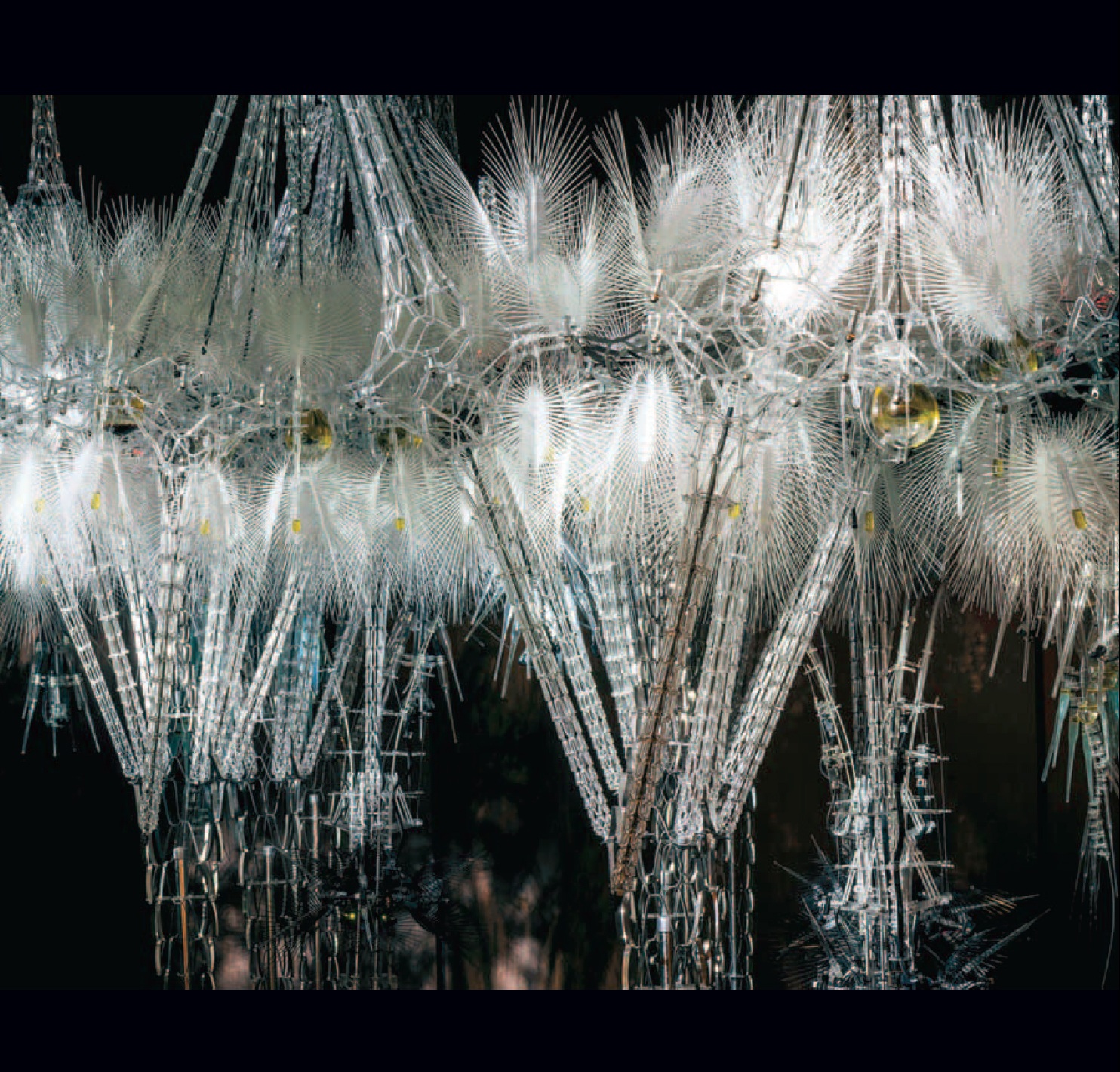
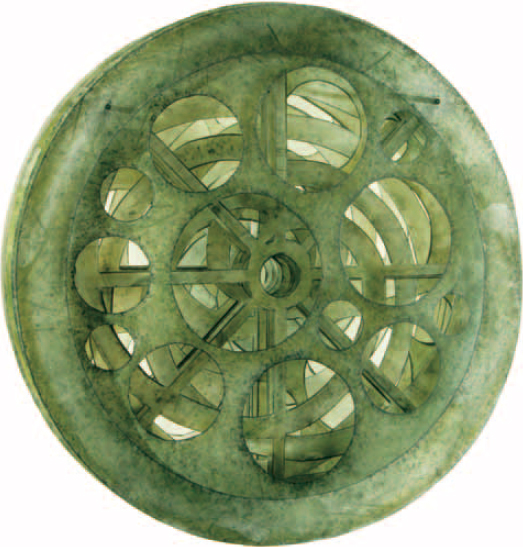
Magic Circle of Circles, from the series Manuscript as Muse, 2008
Acrylic and graphite on mylar
12 x 12 x 10 inches
Gift of Ralph J. and Carol M. Cicerone
This sculpture is an abstraction of Benjamin Franklin’s Magic Circle (pictured at left), an elaborate mathematical puzzle in which the sums of numbers along each radius and along each concentric circle equal 360. Rebecca Kamen’s investigations of scientific drawings and writings from rarely seen manuscripts inspire her artwork. Informed by wide-ranging research into cosmology, history, and philosophy, her work reflects how the ideas of science permeate all areas of human endeavor—including art.
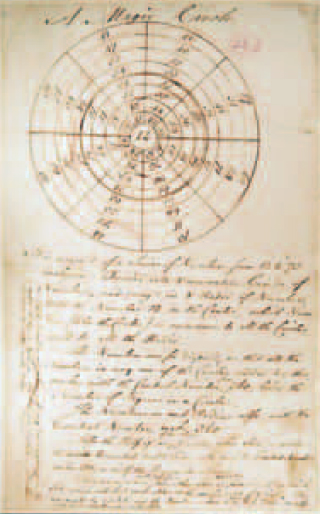
A Magic Circle, a letter from Benjamin Franklin to unknown (ca. 1750), Benjamin Franklin Papers, L (i), 52. (Courtesy of the American Philosophical Society Library)
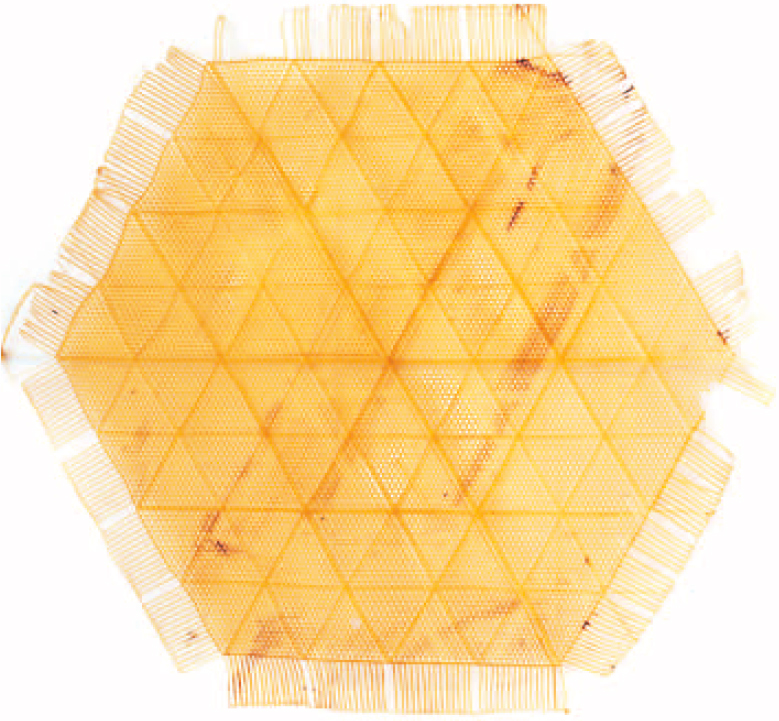
Neri Oxman and the Mediated Matter Group, MIT Media Lab
Untitled, from the series Aguahoja Hex, 2017
Mixed media
45 x 45 inches
What if we could design goods that were completely biodegradable as a way to address the global plastic pollution problem? Neri Oxman and the Mediated Matter Group at the MIT Media Lab explore this question in their Aguahoja Hex series. Experimenting with different combinations of materials for durability, rate of decay, and function, the group fabricated the artifacts in this series out of cellulose from trees, chitosan from crustaceans, acetic acid from apples, and glycerin. Derived from organic matter, printed by a robot, and shaped by water, it points to a future of design thinking where the grown and the made unite.
This page intentionally left blank.
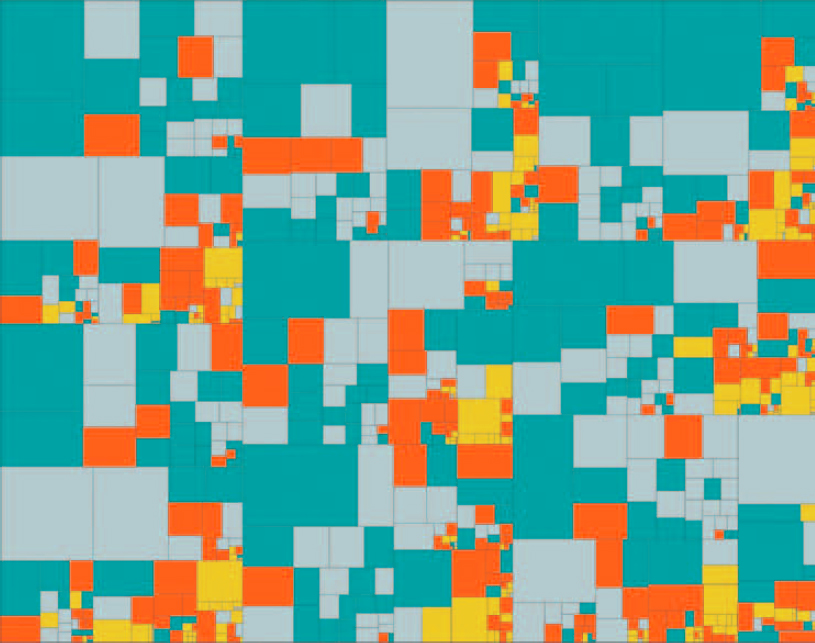
Blooming Businesses, from the series Every Algorithm has ART in it: Treemap Art Project, 2014
Digital inkjet print
24 x 36 inches
Ben Shneiderman, a renowned data visualization expert, pioneered the treemap technique in the early 1990s. Treemaps are used to organize and visualize hierarchical (tree-structured) data as a set of nested rectangles. Shneiderman writes, “Although I conceived treemaps for purely functional purposes (understanding the allocation of space on a hard drive), I was always aware that there were aesthetic choices in making appealing treemaps, such as design, color, aspect ratio, and the prominence of borders for each region, each hierarchy level, and the surrounding box. In addition, certain treemaps are inherently interesting because of the data displayed or patterns revealed.”
This dataset was collected from the World Bank’s Doing Business website. In this context, Shneiderman has stripped the treemap of its functional information such as labels and numbers, intentionally drawing our attention to the aesthetic properties. Shneiderman’s artistic influences include the Op art (optical art) movement of the 1960s, as well as the work of Piet Mondrian, Josef Albers, and others.
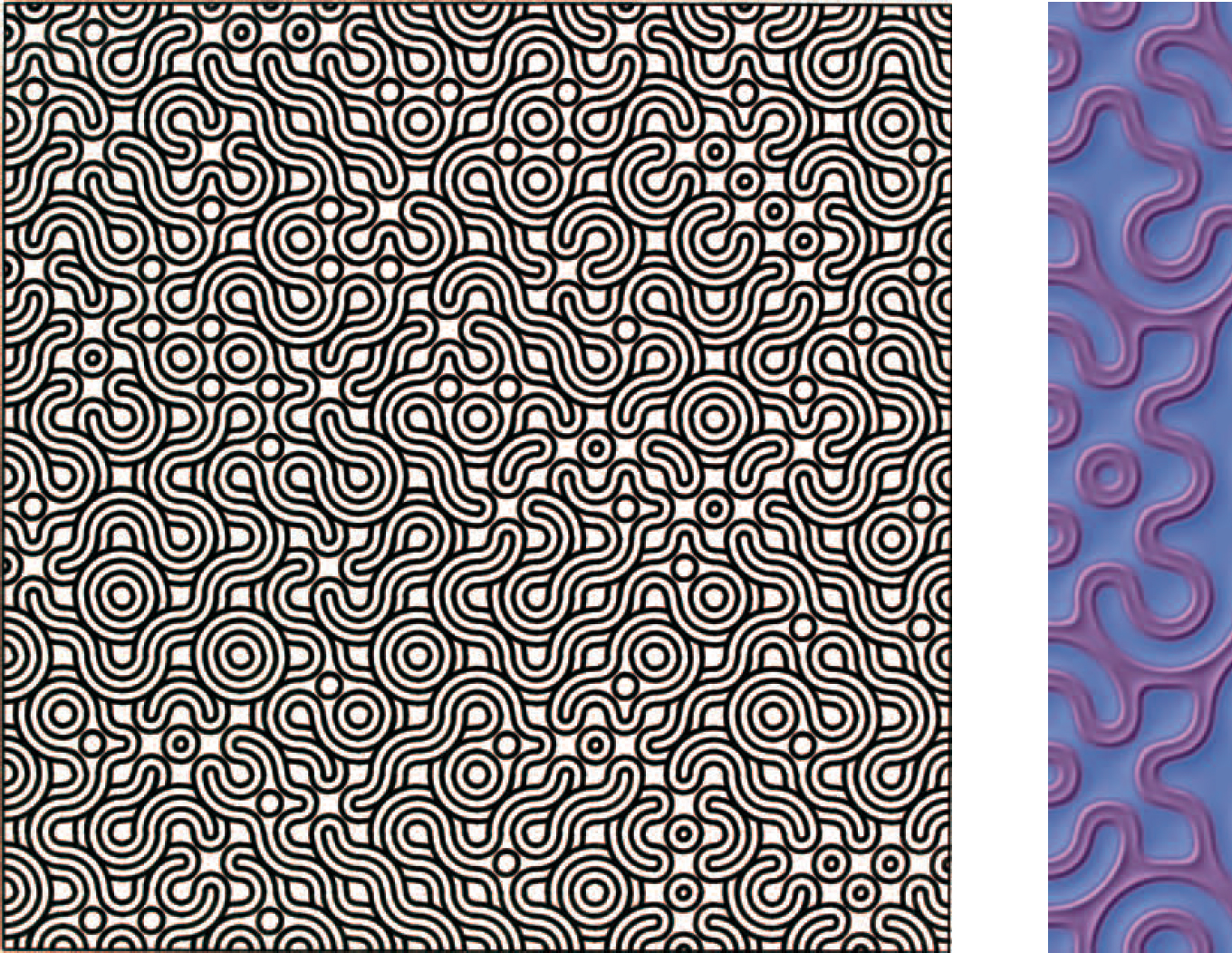
Untitled, Computer Assisted Drawing, 1975/2017
Giclée print made from the original in the Victoria & Albert Collection
10 x 10 inches
Paul Brown discovered digital computers as a creative medium after seeing the Cybernetic Serendipity exhibition at the Institute of Contemporary Arts in London in 1968. Early in his career he began developing processed-based methods for generating images and time-based artworks as an alternative to the then-common approach to art making as a form of self-expression. Brown designs computer programs—sets of instructions—and when they execute, the ongoing process exhibits emergent properties, which comprise the artworks. He emphasizes that the art is not embedded in the programs by intention but instead emerges autonomously from the execution of the programs. This early plotter drawing, made with a special printer for vector graphics, is composed of a matrix of 16 x 16 squares populated by three tiles that were placed and rotated using a random process. The program that generated the work was written in FORTRAN (Formula Translation), a programming language developed for scientists and engineers, and ran off of punched cards on an ICL 1903A mainframe computer in batch processing mode. The output was a paper tape that was transferred to an offline Calcomp Drum Plotter, which took several hours to create the drawing.
Early in his career, Paul Brown rejected naming his artworks, preferring to draw attention to their concrete forms. It was a popular approach in the modernist 1960s, when his professional practice matured. In the 1990s, his attitude changed. He became interested in the way forms and colors that emerged in his artwork affected how spectators interpreted them. Since the 1990s, many of his works have investigated this phenomenon. The interlocking sinusoidal shapes that emerge from this matrix containing variations on three tiles reminded him of the swimming pool paintings by artist David Hockney. Several of Brown’s works from this period pay homage to other artists’ work—Leonardo da Vinci and Vincent van Gogh are examples—and consolidate his modernist belief that he is working in the traditions of art and not, as some of the younger generation of postmodern artists believe, doing something completely new and a-historical.
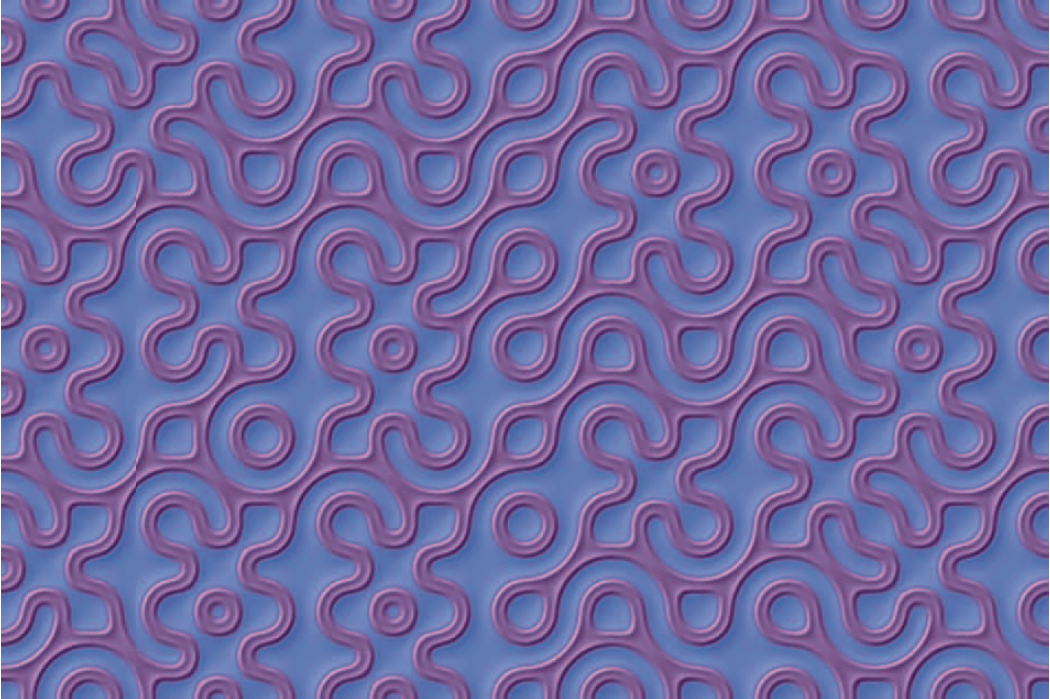
Early in his career, Paul Brown rejected naming his artworks, preferring to draw attention to their concrete forms. It was a popular approach in the modernist 1960s, when his professional practice matured. In the 1990s, his attitude changed. He became interested in the way forms and colors that emerged in his artwork affected how spectators interpreted them. Since the 1990s, many of his works have investigated this phenomenon. The interlocking sinusoidal shapes that emerge from this matrix containing variations on three tiles reminded him of the swimming pool paintings by artist David Hockney. Several of Brown’s works from this period pay homage to other artists’ work—Leonardo da Vinci and Vincent van Gogh are examples—and consolidate his modernist belief that he is working in the traditions of art and not, as some of the younger generation of postmodern artists believe, doing something completely new and a-historical.

Evolutionary Tango, 2008
Dispersion and silkscreen enamel on canvas
79 x 81 inches
Gift of Ralph J. and Carol M. Cicerone
Steve Miller has based a number of works on his collaboration with Rod MacKinnon, a National Academy of Sciences member and 2003 Nobel Prize winner for his breakthrough work on the movement of ions across cell membranes. In paintings that juxtapose photographic, drawn, and silk-screened images with excerpts from MacKinnon’s notebooks, Miller’s work dissolves conventional distinctions between text and image to explore what distinguishes art from science.
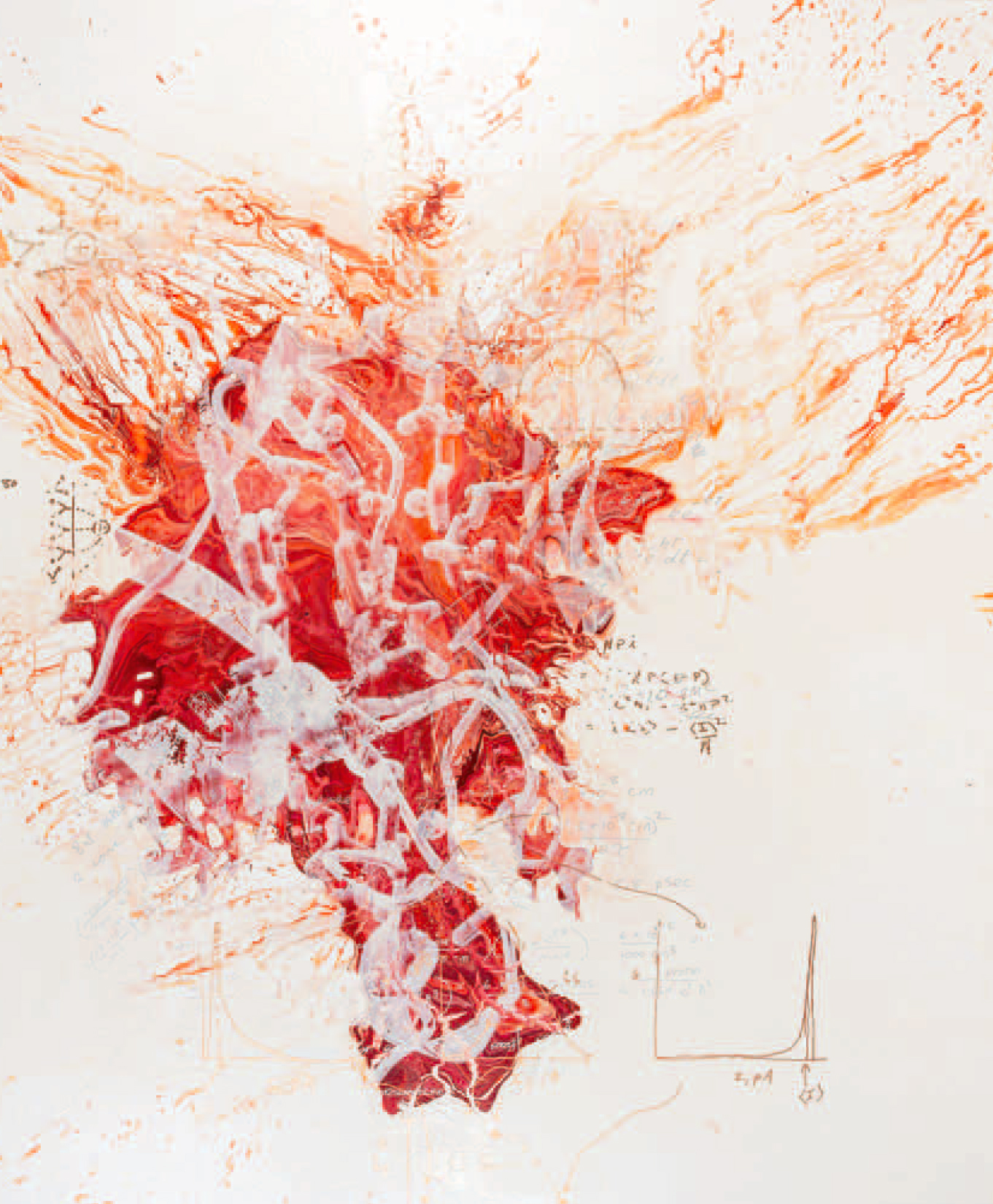
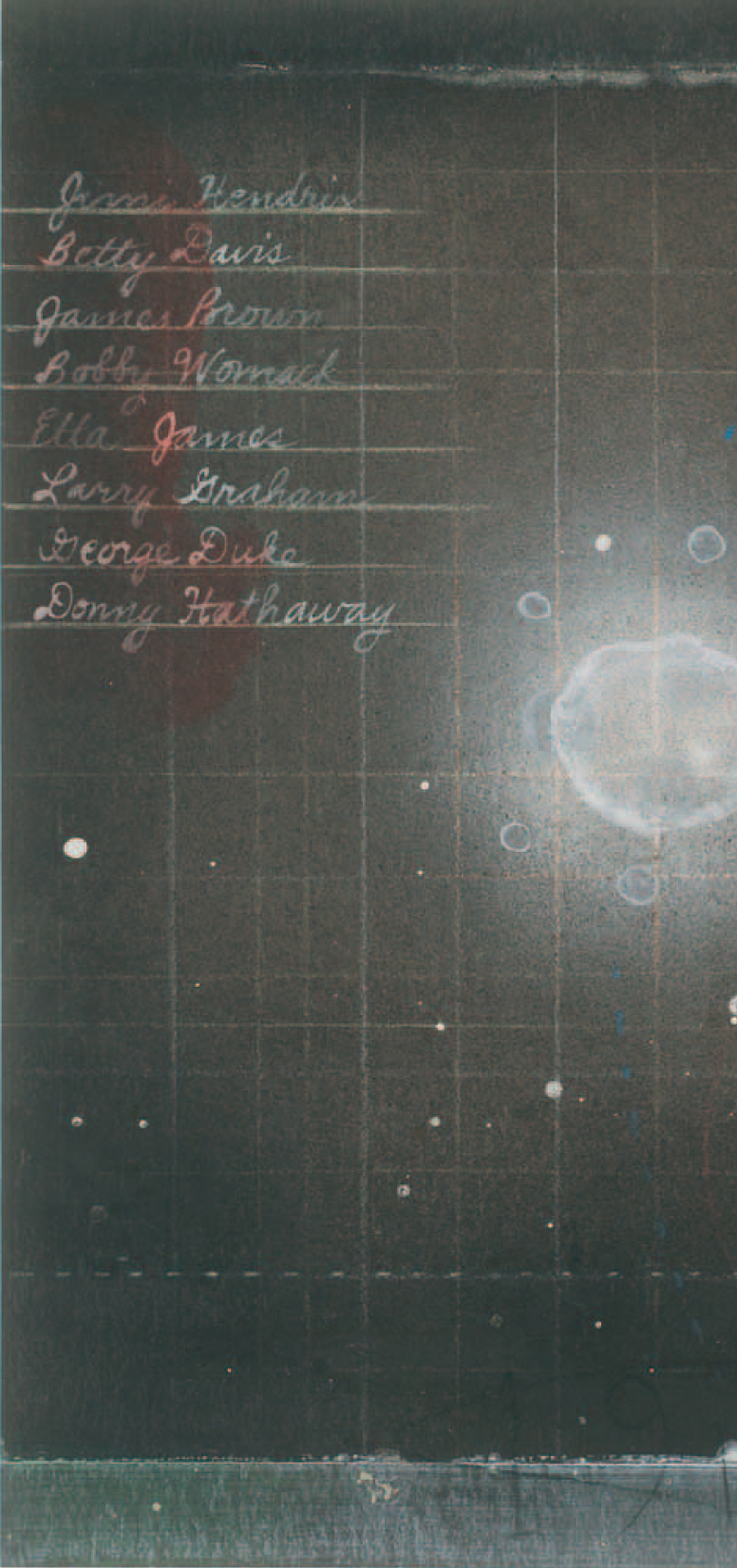
Escape Plan C (And the Music I’ll Need), 2018
Mixed media on paper
8.5 x 11 inches
Renée Stout explores the spiritual roots of her African American heritage through her work. Inspired by the African Diaspora, everyday life in her Washington, D.C., neighborhood, her youth in Pittsburgh, PA, and current events, she employs a variety of media, including painting and drawing, to create works that encourage self-examination, introspection, and the ability to laugh at the absurdities of life and ourselves. This work was part of an exhibition titled When 6 is 9: Visions of a Parallel Universe (Hemphill Gallery, 2018) where the artist responds to the continued presence of racism by imagining an escape to a place, “to dream, to transcend, to see beyond our difficulties to a cure, to something better.” She was the first American artist to exhibit in the Smithsonian’s National Museum of African Art.

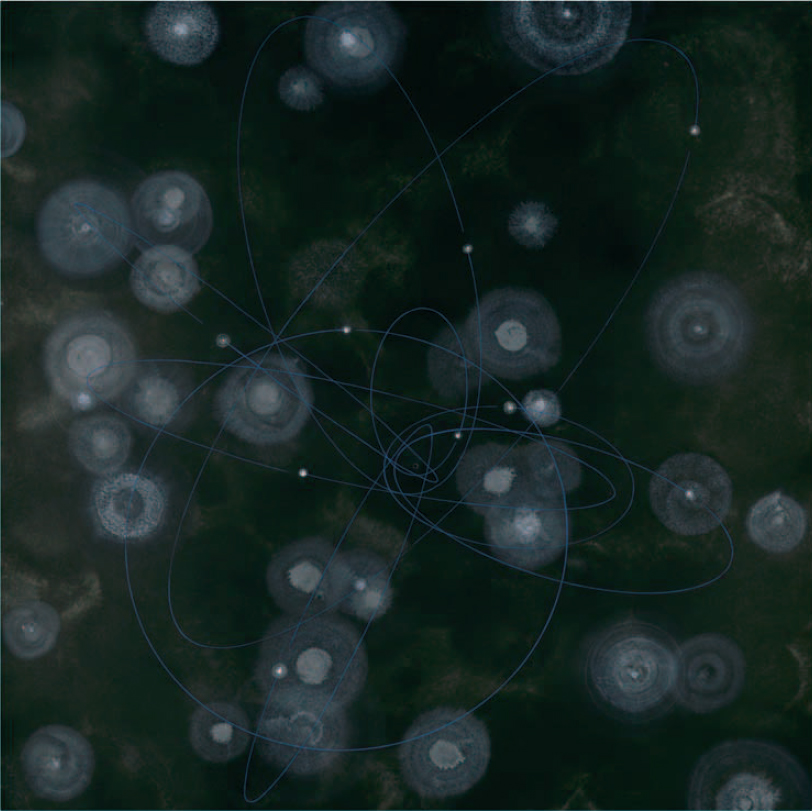
Galactic Center of Mass–9 stars v.1, from the series Orbital Mechanics, 2020
Acrylic paint and sumi ink on paper
49 x 49 inches
Tim Makepeace has drawn elliptical shapes that represent the paths of the closest stars orbiting the supermassive black hole that resides at the center of our galaxy 26,000 light years away. This work and others in the Orbital Mechanics series are based on a 3D mathematical model made from the data collected by the University of California, Los Angeles, Galactic Center Group over 10 years, using the Keck Telescope in Hawaii, and the VLT telescope facility operated by the European Southern Observatory in the Atacama Desert of northern Chile. Although Makepeace’s works are often data-driven, their apparent abstraction is inspired in part by the Constructivist Movement, with its vocabulary of geometry, proportion, and optical play.
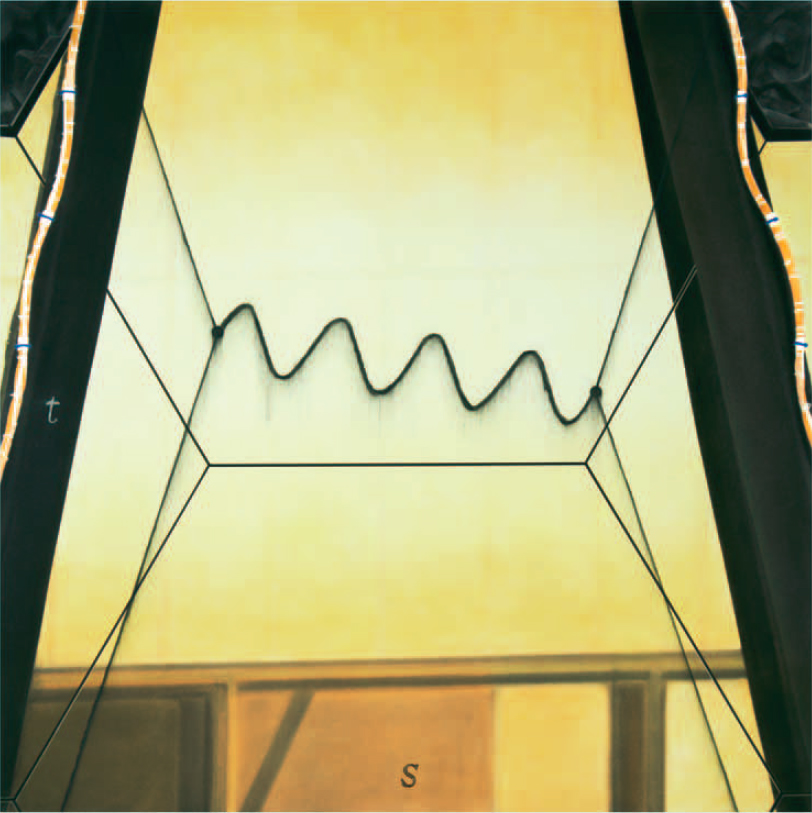
JWST vs. QED v.1, 2021
Charcoal on archival digital print
30 x 30 inches
In 2017, Washington, D.C.-based artist Tim Makepeace was one of several artists selected by NASA to create artwork inspired by the construction of the James Webb Space Telescope (JWST). Makepeace’s JWST vs. QED is about space, time, and light. It is a drawing of a close-up view of JWST. It depicts part of the telescope’s primary hexagonal gold-plated mirror, with an overlay of a graphic illustration of a Feynman diagram. This particular diagram is a representation of quantum electrodynamics that describes how an electron can emit a charge carrying a photon, and then that photon can be absorbed, slightly later, or slightly earlier, by another electron. The wiggly line represents the photon moving to the right, forward in space after being emitted from an electron. The photon is also moving down in this diagram, indicating that it can travel back in time. Effectively, the photon is absorbed by one electron before it was emitted from the other electron, seemingly violating laws of physics and running time backward. This is a difficult aspect of quantum physics that uses retrocausality and quantum entanglement to explain the phenomena. This theory attempts to show that space and time are effectively interchangeable and are facets of the same thing, depending on one’s relative point of view.
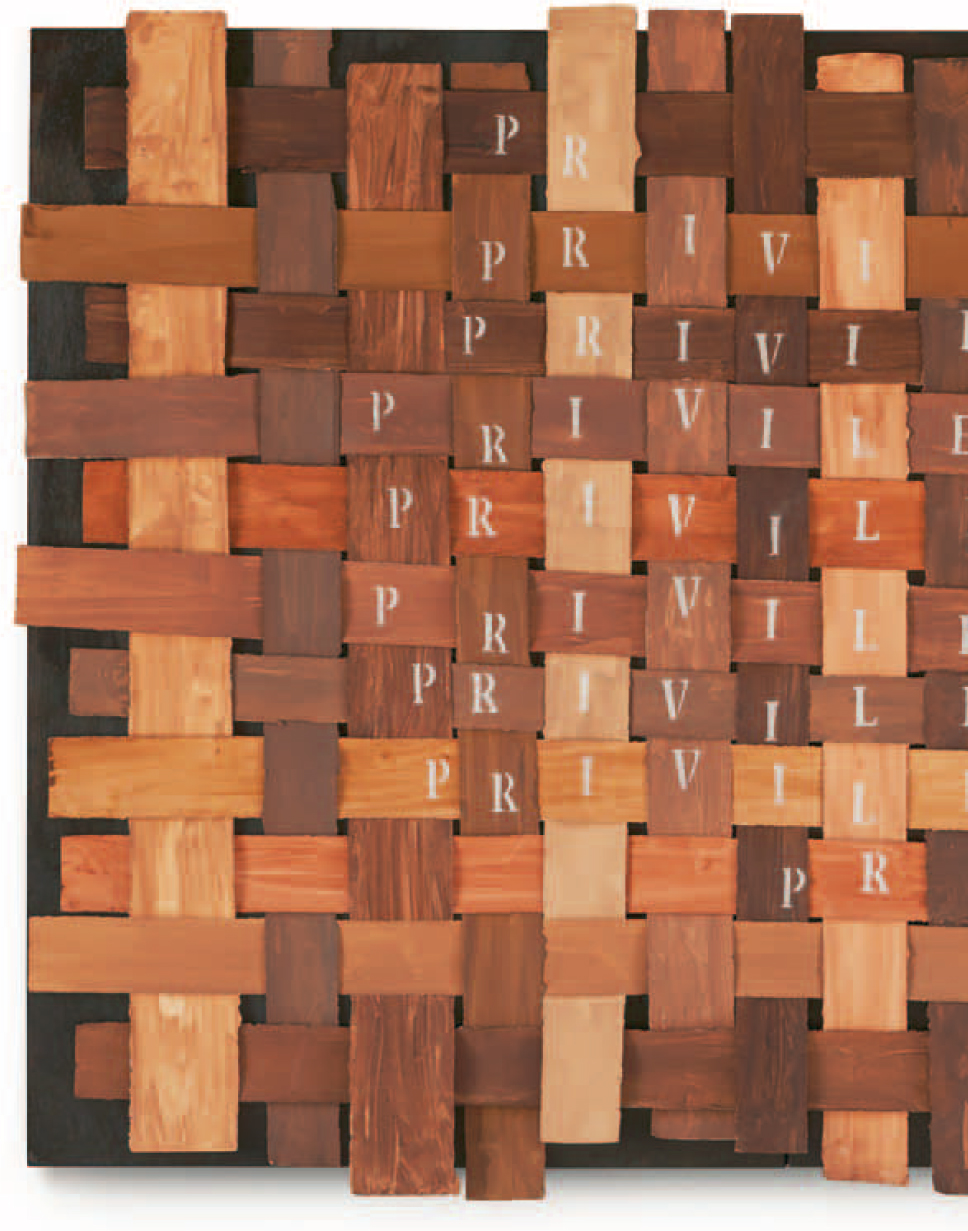
Privilege Grid No. 3, 2018
Watercolor, chalk, and wax on paper
41.50 x 29 inches
It is estimated that at least 1.8 million Africans lost their lives during the Trans-Atlantic Slave Trade. The remains of these people rest at the bottom of the Atlantic Ocean, where they linger on, nameless and unknown, often left out of American slavery narratives. Kathie Foley-Meyer, a student in the University of California, Irvine’s Ph.D. Program in Visual Studies, would like to change that. After spending time in West and East Africa, Foley-Meyer became interested in the journey of enslaved people who were taken from their homes, shipped on boats, and sold as property.
Specifically, she began to think about the people whose stories are rarely told, like those who did not survive the journey. Using the online database Slave Voyages, she studied ship paths and maps that gave an overview of the slave trade. Foley-Meyer is a participant in the Ocean Memory Project, a collaborative of scientists, artists, engineers, and designers who are exploring the question, “Does the ocean have a memory?” The Ocean Memory Project was funded by the National Academies Keck Futures Initiative and is led by National Academy of Sciences member Jody Deming.
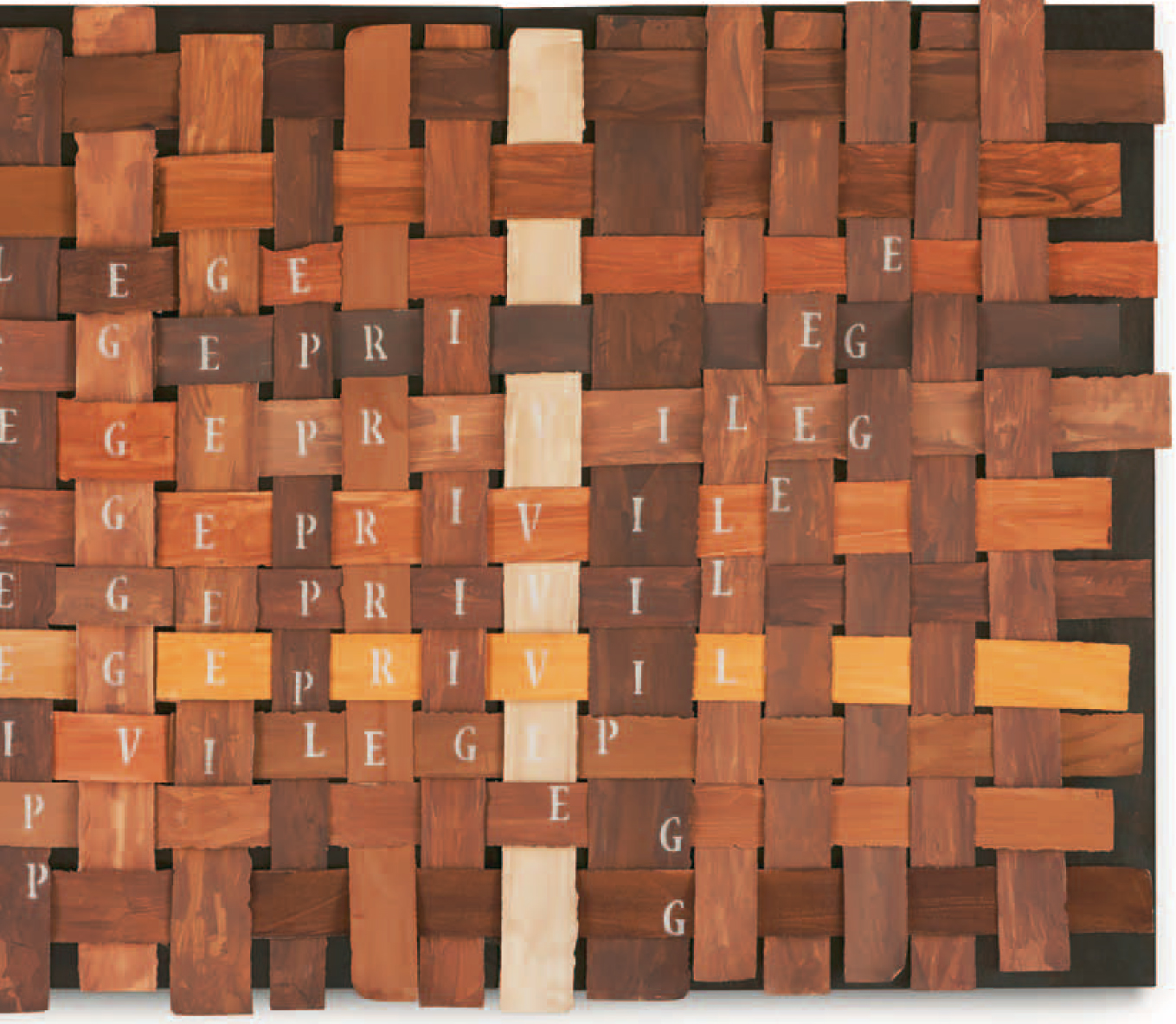
In the Wake: With the Bones of Our Ancestors, 2018
Watercolor, chalk, and wax on paper
41.50 x 29 inches
According to the artist, “This piece reflects the fact that the concept of privilege is woven into the fabric of the United States of America; it is the shape of our nation composed of many shades of human beings.”
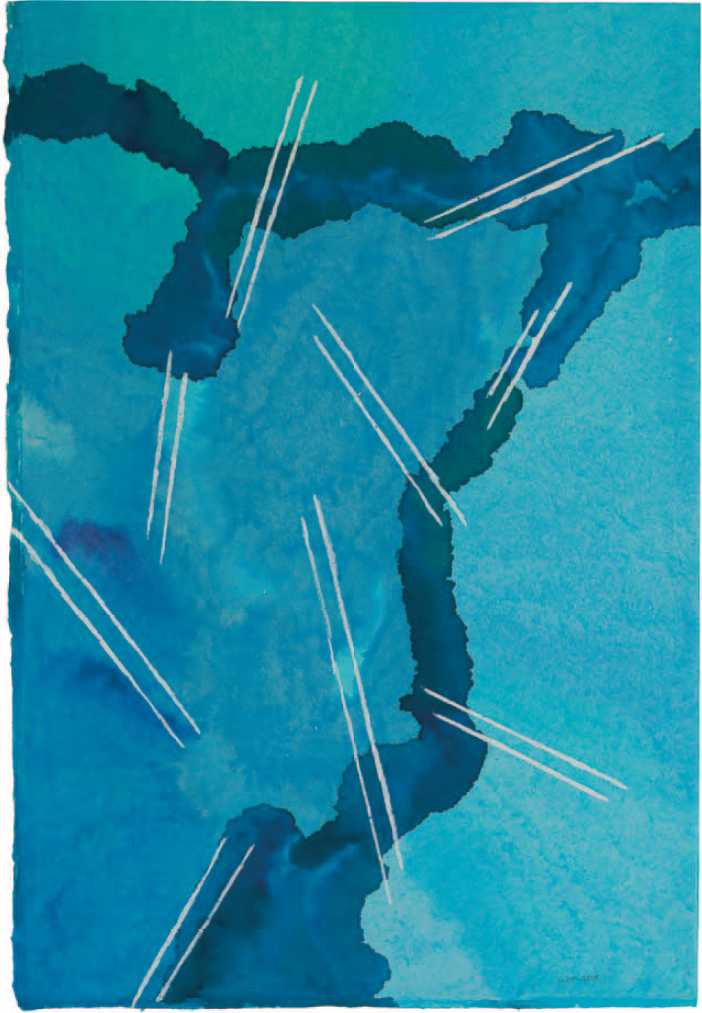
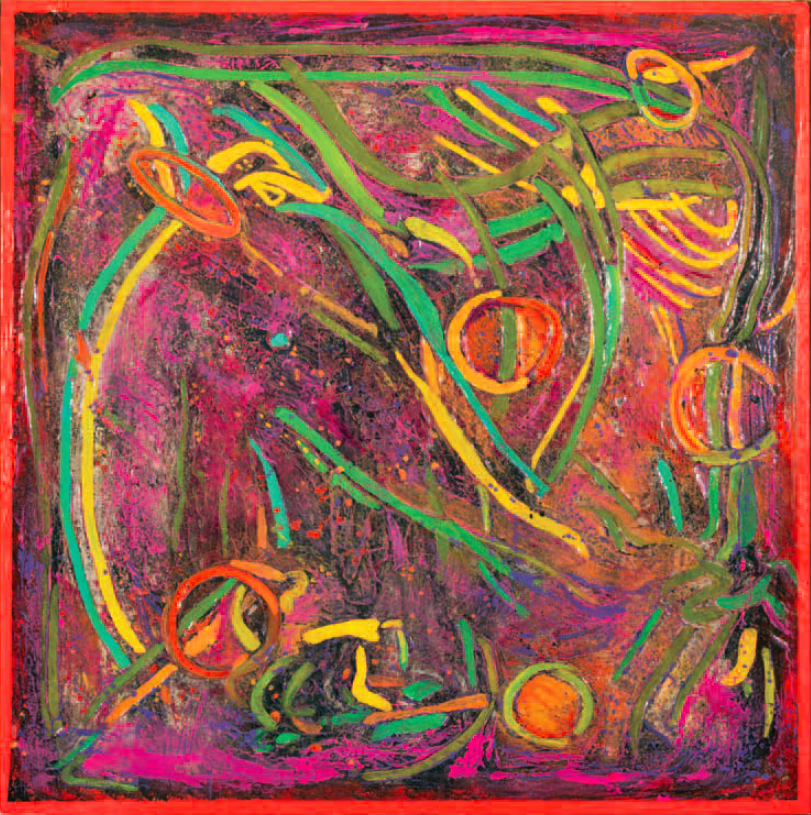
HeLa No. 1, from Surface from Under the Microscope: The Henrietta Lacks Series, 2017
Acrylic on canvas framed in oak
32 x 32 inches
Jeffrey Kent’s painting pays homage to Henrietta Lacks, an African American tobacco farmer who moved to Baltimore in 1941 from southern Virginia and died in 1951 of cervical cancer at the age of 31. Her cancer cells—taken months before she died without her knowledge—became one of the most important tools in medicine, vital for developing the polio vaccine, cloning, gene mapping, in vitro fertilization, AIDS, Parkinson’s disease research, and more. This abstract painting references contrast-phase microscopic imagery of Lacks’s cells, known as HeLa cells.
Since the 1950s, her cells have been bought and sold by the billions, yet for decades she remained virtually unknown and her family uncompensated. Inspired by the undulating shapes and forms of cellular structures, Kent playfully suggests that “they appear as celestial bodies floating in an atmospheric universe.” Yet, considering Lacks’s story and the history of medical testing on African Americans without their consent, the artist also intends to raise questions about medical ethics, patients’ rights, and race.

























